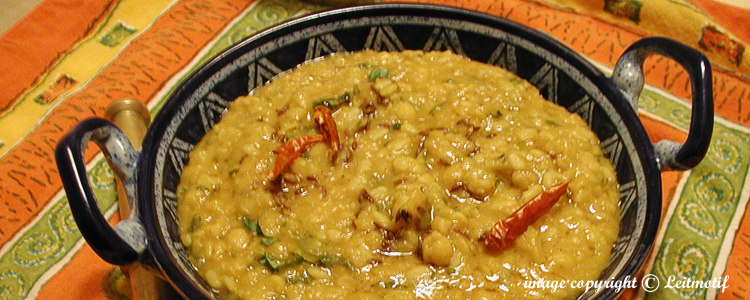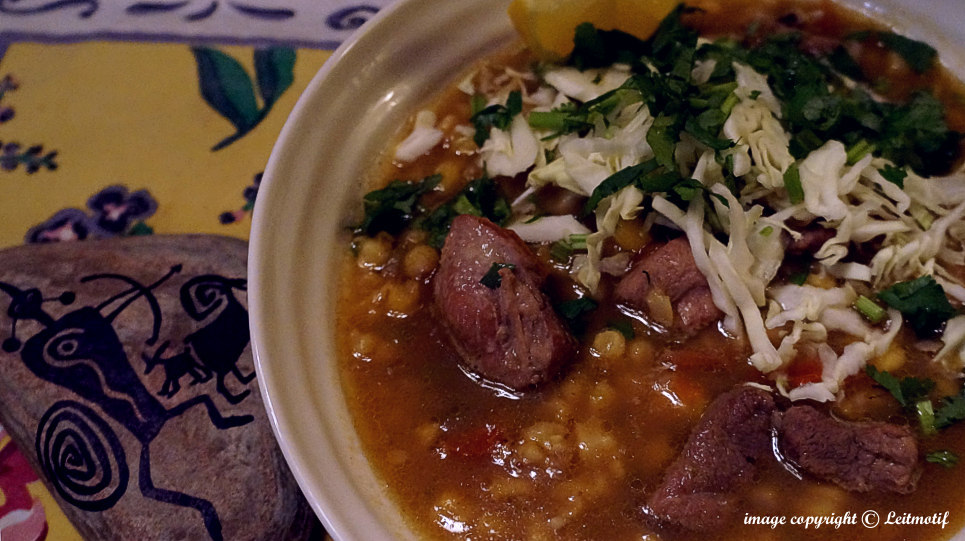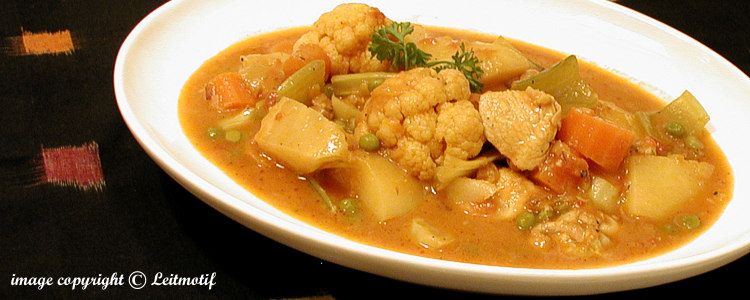Indians cook a variety of pulses, which include dals (lentils) and beans, and are eaten almost every day as an accompaniment to steamed rice & wheat breads. Predominantly a vegetarian society, it depends largely on cereals & pulses as the main source of protein & energy. ‘Pancharatna’ means Five Jewels, and this stew used five (skinless) varieties of lentil.
Articles tagged with: stew
Posole with Chico & Rita
It was my first experience cooking hominy at home. I couldn’t find the dry grain at the local Whole Foods store (the store assistant was Mexican and said she made posole as well, but using only the canned version since the grains took forever to cook). I was determined to use the dry grain, and finally found it in the Spanish section in a grocery store. (Hominy is whole kernels of lime-treated maize, and when ground, you get the ‘masa’ for corn tortillas and tamales). To this Mexican stew of hominy and pork (you can use chicken instead) I added Hatch chiles from Hatch, New Mexico. Usually I order these roasted chiles online, but this particular time I was lucky to find them at the local grocer’s, so I roasted them myself at home – all in all a far too lengthy way to make posole, but so much fun! If you can’t get Hatch chiles substitute fresh poblanos that you can smear with oil and roast over the stove or in the oven. But really, it’s not the same thing.
Ishtoo ~ Anglo-Indian Stew
This is a bonafide Borthwick family recipe, a stew that was wolfed down with much enthusiasm. Anglo-Indian cooking is a unique and little-known tradition that evolved during the days of the British Raj in India. An era when English ‘sahibs’ had Indian butlers and cooks, the kitchen staff added regional touches to ‘English’ dishes, fortuitously creating one of the earliest fusion cuisines – an English menu elevated to new heights by injecting ingredients used in South Indian, Bengali, Goan and Mughlai cooking. This tradition continued in mixed race Anglo-Indian homes after the departure of the British in 1947.



